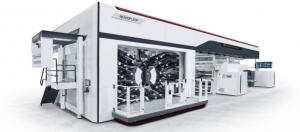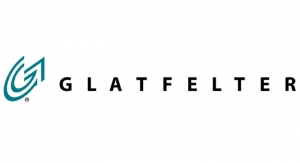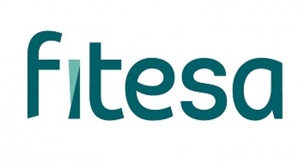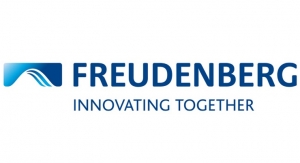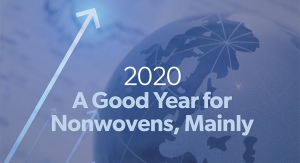David Price, Price Hanna Associates10.13.15
Nonwoven capacity and demand development in Southeast Asia has been growing impressively since 2003 to supply durable end uses and more recently disposable hygiene markets. Up until the mid-1990’s, nonwoven capacity in SE Asia was small and consisted mainly of carded needlepunched technology used to manufacture geotextiles for civil engineered infrastructure projects. Some small capacity spunbonded polyester lines in Thailand and Indonesia were also present which served various durable markets. In the late 1990’s a new high capacity spunbonded polypropylene needlepunched line was installed by Polyfelt Ten Cate in Malaysia to supply growing demand for geotextiles in the region. In addition, a new spunbonded polyester line was installed by Multi-Spunindo in Indonesia to supply other industrial markets. At this time, a few spunmelt producers were also present.
Since 2003, the installation of fine denier spunbonded and spunmelt polypropylene capacity in SE Asia has exploded. While these first installations were made to supply exports to Japan and other parts of Asia, this technology is now being installed to serve a still small but growing local demand as well. For these reasons, spunmelt polypropylene capacity has become the largest of all nonwoven technologies in the region.
The development of nonwoven demand and capacity in SE Asia is not unlike any other developing economic region before it. Typically, nonwoven usage in developing markets begins with demand for infrastructure end uses (geotextiles) made on low capacity and low cost technology. This is then followed by the installation of technology for disposable end uses for hygiene that will serve export markets as local demand grows.
Mitsui was the first to install modern, high capacity fine denier spunmelt polypropylene technology in SE Asia in 2003. The nameplate capacity of both fine and coarse denier spunbonded/spunmelt polypropylene technology in the region is expected to grow from 62,000 tons in 2003 to 219,000 tons in 2016 based upon expansions already announced or underway. This 157,000 tons of new capacity is equal to an annual growth rate of 9.4%. The total spunmelt polypropylene capacity in the region in 2016 of 219,000 tons will account for just 6% of total global capacity.
In 2015, the largest amount of nonwoven capacity in the region is in Thailand, where 99,000 tons of spunmelt polypropylene nonwoven capacity is present. No new capacity is expected in 2016. In 2015, the largest producer in Thailand is Ashai, followed by Mitsui, CNC and Narula. From 2000-2015, the capacity of this technology grew from 32,000 tons or 9.9% per year. In 2016, Thailand is expected to have 45% of all capacity present in SE Asia.
In Malaysia, 67,000 tons of spunmelt capacity is present in 2015 up from 19,000 tons in 2003 and equal to an annual growth rate of 11.1%. No new capacity is expected to be installed in 2016. The largest producer in Malaysia is Fibertex, who added 48,000 tons of new capacity since 2003 followed by Polyfelt Ten Cate. In 2016, Malaysia is expected to have 31% of all spunmelt polypropylene capacity in the region.
Indonesia has experienced rapid capacity growth due to expansions by Toray. In 2015, there is 29,000 tons of capacity in Indonesia of which 20,000 tons belongs to Toray. Toray will add another 20,000 tons in 2016. Toray is the largest producer in Indonesia and will be the second largest producer in SE Asia in 2016. In 2016, Indonesia is expected to have 22% of all spunmelt polypropylene capacity in the region.
Spunbonded/spunmelt fine denier producers in SE Asia will remain dependent upon exports to achieve acceptable levels of capacity utilization. New capacity being commissioned in 2015 and 2016 will add to that dependence. Disposable nonwoven demand is growing but remains quite small compared to installed capacity in the region. Cultural and economic barriers are present in the region which over time is expected to change allowing for increased market penetration of disposable hygiene products. n
David J. Price is the author of the annual subscription report “Spunbonded and Spunmelt Nonwoven Polypropylene World Capacities, Supply/Demand and Manufacturing Economics. The last report was published in May 2015. More info: Michele Scannapieco, Price Hanna Consultants LLC, at mscannapieco@pricehanna.com.
Since 2003, the installation of fine denier spunbonded and spunmelt polypropylene capacity in SE Asia has exploded. While these first installations were made to supply exports to Japan and other parts of Asia, this technology is now being installed to serve a still small but growing local demand as well. For these reasons, spunmelt polypropylene capacity has become the largest of all nonwoven technologies in the region.
The development of nonwoven demand and capacity in SE Asia is not unlike any other developing economic region before it. Typically, nonwoven usage in developing markets begins with demand for infrastructure end uses (geotextiles) made on low capacity and low cost technology. This is then followed by the installation of technology for disposable end uses for hygiene that will serve export markets as local demand grows.
Mitsui was the first to install modern, high capacity fine denier spunmelt polypropylene technology in SE Asia in 2003. The nameplate capacity of both fine and coarse denier spunbonded/spunmelt polypropylene technology in the region is expected to grow from 62,000 tons in 2003 to 219,000 tons in 2016 based upon expansions already announced or underway. This 157,000 tons of new capacity is equal to an annual growth rate of 9.4%. The total spunmelt polypropylene capacity in the region in 2016 of 219,000 tons will account for just 6% of total global capacity.
In 2015, the largest amount of nonwoven capacity in the region is in Thailand, where 99,000 tons of spunmelt polypropylene nonwoven capacity is present. No new capacity is expected in 2016. In 2015, the largest producer in Thailand is Ashai, followed by Mitsui, CNC and Narula. From 2000-2015, the capacity of this technology grew from 32,000 tons or 9.9% per year. In 2016, Thailand is expected to have 45% of all capacity present in SE Asia.
In Malaysia, 67,000 tons of spunmelt capacity is present in 2015 up from 19,000 tons in 2003 and equal to an annual growth rate of 11.1%. No new capacity is expected to be installed in 2016. The largest producer in Malaysia is Fibertex, who added 48,000 tons of new capacity since 2003 followed by Polyfelt Ten Cate. In 2016, Malaysia is expected to have 31% of all spunmelt polypropylene capacity in the region.
Indonesia has experienced rapid capacity growth due to expansions by Toray. In 2015, there is 29,000 tons of capacity in Indonesia of which 20,000 tons belongs to Toray. Toray will add another 20,000 tons in 2016. Toray is the largest producer in Indonesia and will be the second largest producer in SE Asia in 2016. In 2016, Indonesia is expected to have 22% of all spunmelt polypropylene capacity in the region.
Spunbonded/spunmelt fine denier producers in SE Asia will remain dependent upon exports to achieve acceptable levels of capacity utilization. New capacity being commissioned in 2015 and 2016 will add to that dependence. Disposable nonwoven demand is growing but remains quite small compared to installed capacity in the region. Cultural and economic barriers are present in the region which over time is expected to change allowing for increased market penetration of disposable hygiene products. n
David J. Price is the author of the annual subscription report “Spunbonded and Spunmelt Nonwoven Polypropylene World Capacities, Supply/Demand and Manufacturing Economics. The last report was published in May 2015. More info: Michele Scannapieco, Price Hanna Consultants LLC, at mscannapieco@pricehanna.com.


